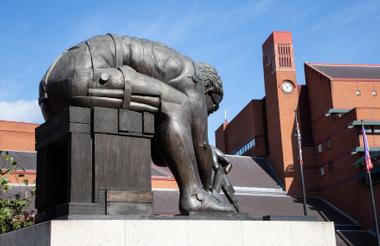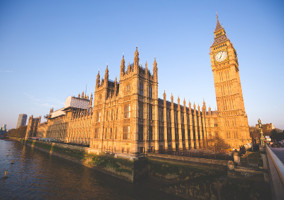The British Library’s overall income has increased by £6m to £147.6m, according to its newly filed accounts.
For the financial year ending March 2023, the charity saw the majority of its income (79%) come from grant in aid, which increased by over £6m in a year.
The charity’s income from grant in aid increased by 2% as part of a “general inflationary uplift” and additional funding to support increases in energy costs and the impact of Covid-19.
Income from charitable and other trading activities also increased by 43% to £15.5m.
However, donations and legacies to the charity fell by 26%, from £20.1m to £14.7m.
Visits and income ‘below historic levels’
Despite an increase in overall income, the accounts state that visitor numbers and its associated income are still below historic levels.
The accounts read: “Income from onsite retail, publishing and exhibition ticket sales improved on the previous year as visitor numbers continued to recover from the pandemic. Although visitor numbers and the associated income did recover to some degree during the year it was still below historic levels.”
Total visit numbers fell by more than over 400,000 in a year to 26.5 million in 2022-23. This is 5% below the charity’s target, which was 27.7 million.
Total visits encompass attendance to the library’s main St Pancras site, the Knowledge Centre, Boston Spa site and visits to the British Library website.
The Knowledge Centre was closed in June 2022 unexpectedly “to carry out essential major electrical renovations” which resulted in a “substantial loss of income from events and commercial hire”, a message from the chair and CEO reads.
Expenditure rose by £19m
The charity’s overall expenditure rose by £19m during the year from £127.3m to £146.2m.
Some 97% of its expenditure went on charitable activities which is comparable to the year prior.
In 2022-23, British Library spent £1.7m on raising funds and donations, compared with £1.5m the year before.
Annual pay award implemented
Last September the British Library undertook its first staff survey since 2019, and concerns over pay were “particularly prominent”, the accounts state.
Since then, the charity has implemented an annual pay award and its accounts state that the Cabinet Office has approved a business case for an increased award.
“Despite this progress, industrial relations remain challenging given the context of the national dispute regarding pay, pension, redundancy terms and job security,” the accounts read.
Gender pay gap shrinks
The charity had a commitment to close its gender pay gap by 2023 but this has not yet been achieved.
Its median gender pay gap for 2022 sits at 0.2% in favour of men – an improvement on the 1.89% the year prior.
According to its data filed on GOV.UK, its mean average hourly pay is 2.3% lower for women.
The data also shows the majority of the lowest-paid jobs are held by women (58.6%), but so are most of the highest-paid (54.3%). Women appear to occupy the most roles at the British Library overall, with over 50% of each pay quartile being occupied by women.
Its bonus pay gap was 100% in favour of men, as no women received any bonuses during the year.
The library hopes for its median gender pay gap to reach 0% in the future, its accounts read. In 2023 it will also publish its ethnicity and disability pay gaps.












